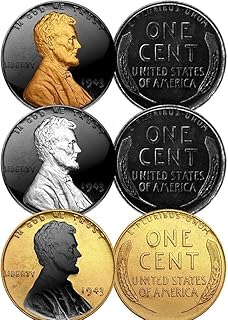The stock market can sometimes seem like a puzzle, with its fluctuating values and myriad of investment options. For new investors, the array of choices may appear daunting, but there's a straightforward solution to demystify the process: exchange-traded funds, or ETFs. Beneath their simple facade, ETFs are comprehensive investment vehicles, pooling together stocks, bonds, or other assets, all while trading on exchanges just like individual stocks. Their combined nature offers investors the double advantage of diversification, to spread out risk, and flexibility, for ease of trading. As we look toward August 2023, let's delve into the crux of how choosing the right ETFs can be a game-changer for your portfolio, leading to potentially minimized risks and enhanced returns.
The stock market can sometimes seem like a puzzle, with its fluctuating values and myriad of investment options. For new investors, the array of choices may appear daunting, but there's a straightforward solution to demystify the process: exchange-traded funds, or ETFs. Beneath their simple facade, ETFs are comprehensive investment vehicles, pooling together stocks, bonds, or other assets, all while trading on exchanges just like individual stocks. Their combined nature offers investors the double advantage of diversification, to spread out risk, and flexibility, for ease of trading. As we look toward August 2023, let's delve into the crux of how choosing the right ETFs can be a game-changer for your portfolio, leading to potentially minimized risks and enhanced returns.
The Allure of Exchange-Traded Funds
At their core, ETFs are about diversification. They package a collection of investments, meaning your money isn't tied to the fate of a single stock or bond. This can be particularly comforting in volatile markets, where the risk is spread across various sectors and asset classes. Furthermore, ETFs are known for their flexibility in trading. Unlike mutual funds, which trade once a day after markets close, ETFs can be bought and sold throughout the trading day at current market prices.
Crafting a Strategy: Factors to Consider
When zeroing in on an ETF, it's not just about picking the one with the best past performance. An astute investor takes the time to understand the risk tolerance associated with each fund, ensuring it aligns with their personal comfort level. Additionally, scrutinizing expense ratios—what you'll pay annually to own the ETF—is essential, as high fees can erode your investment returns over time.
Four Steps to Embarking on Your ETF Investment Journey
Define Your Investment Objectives: Begin by asking yourself the quintessential questions about your investment goals. Are you saving for retirement, a down payment on a house, or perhaps your children's education? The duration of your investment horizon and the returns you're aiming for will inform the ETFs you'll target.
Do Your Due Diligence: With your investment goals set, embark on the research phase. Look for ETFs that have a track record of stable returns and examine their holdings to ensure they match your investment philosophy.
Select a Brokerage Platform: You'll need a bridge to the world of ETFs, and that's where a brokerage account comes in. Find one that offers a broad selection of ETFs, low fees, and an easy-to-use platform.
Buy and Monitor Your Investments: Having opened your account, the next step is buying into your chosen ETFs. But the work doesn't stop there; regular monitoring is crucial. Keep an eye on performance and stay abreast of market developments. Your investment strategy should be dynamic, adapting as necessary to stay on course with your financial objectives.
The Role of ETFs in Diversification
Diversification is more than just an investment buzzword; it is the principle that can prevent your portfolio from suffering the impact of a downturn in a single investment or sector. By holding a variety of ETFs — each a basket of different stocks or bonds — you spread your exposure, mitigating the risk of a single point of failure.
Navigating Market Volatility with ETFs
Market ups and downs are inevitable, yet ETFs can provide a level of insulation from this volatility. Since they represent a broad swath of the market or a particular sector, they can help smooth out the extremes of market movements. This attribute makes ETFs a relatively safer investment choice, particularly for novices who may not have the experience or risk appetite for the turbulence of individual stocks.
Keeping Costs in Check: Expense Ratios Explained
The expense ratio of an ETF is a vital factor to consider as it directly affects your net return on investment. It's a measure of the cost to operate and manage the fund, expressed as a percentage of the fund's average assets. Even a seemingly small difference in these ratios can amount to a significant disparity in costs over the long haul.
The Journey Towards Financial Goals with ETFs
Be it for the seasoned investor or the market newcomer, ETFs have a place in any well-rounded investment strategy. They aren't just a tool for building wealth; they're also a means to achieve concrete financial targets. With regular reviews of your ETF positions and a willingness to reallocate resources as necessary, staying aligned with your financial roadmap is within reach.
Embracing the Future: Investing in Technological Trends
ETFs aren't limited to broad market indices; many cater to specific sectors, including the fast-evolving realms of programming, artificial intelligence, and machine learning. As these technologies forge ahead, investors can tap into the exciting growth prospects via sector-specific ETFs focusing on tech-centric companies leading the charge in innovation.
Investing in ETFs, particularly with an eye towards August 2023, provides a structured pathway into the stock market. By taking a measured, informed approach and aligning your choices with your financial objectives, ETFs can be the cornerstone of a diversified and growth-oriented investment portfolio. Stay knowledgeable, adapt when necessary, and you can navigate the market with confidence, powered by the many benefits ETFs have to offer.
Information for this article was gathered from the following source.




